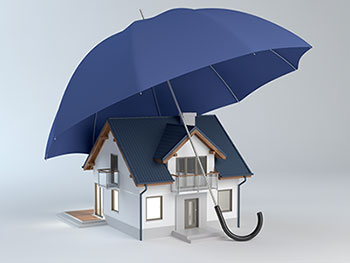Home Insurance
JLA Partners Insurance
Homeowners Insurance | Free Quotes
Your home is a major investment of time and money. Homes are the “heart” of any individual or family, so it makes perfect sense that you shouldn’t take homeowner insurance lightly. You should consider not only the coverage of your valued possessions, but the agency from whom you purchase that coverage.
JLA Insurance clients often have unique needs relating to their home, personal property and valuables that may require enhanced protection. Our experienced agents thoroughly assess each property, its contents and surroundings to adequately recommend appropriate coverage against any accident, theft or disaster.We make sure you have the right protection with your homeowner policy. It may include various personal insurance protections, losses to your home, its contents or loss of use. Your coverage also includes liability insurance for accidents that happen in the home.
We offer complimentary insurance reviews to make sure you have the right coverage for your needs. JLA Insurance Partners will stay in contact with you to let you know of possible changes in your policy, new options that may be available to you as well as helping you take advantage of any discounts available in your coverage.
JLA Insurance Partners work with insurance carriers that have earned our confidence for quick and fair settlement claims. We facilitate the claims process with the insurance carrier on our clients’ behalf to ensure that your claim is handled expeditiously.
Typical Home Insurance Coverages
Section I — Property Coverages
- Coverage A – Dwelling Covers the value of the dwelling itself (not including the land).
- Coverage B – Other Structures Covers other structure around the property that are not used for business, except as a private garage. Typically limited at 10% to 20% of the Coverage A, with additional amounts available by endorsement.
- Coverage C – Personal Property Covers personal property, with limits for the theft and loss of particular classes of items (e.g., $200 for money, banknotes, bullion, coins, medals, etc.). Typically 50 to 70% of coverage A is required for contents, which means that consumers may pay for much more insurance than necessary. This has led to some calls for more choice.[14]
- Coverage D – Loss of Use/Additional Living Expenses Covers expenses associated with additional living expenses (i.e. rental expenses) and fair rental value, if part of the residence was rented, however only the rental income for the actual rent of the space not services provided such as utilities.
- Additional Coverages Covers a variety of expenses such as debris removal, reasonable repairs, damage to trees and shrubs for certain named perils (excluding the most common causes of damage, wind and ice), fire department changes, removal of property, credit card / identity theft charges, loss assessment, collapse, landlord’s furnishing, and some building additions. These vary depending upon the form.
- Exclusions In an open perils policy, specific exclusions will be stated in this section. These generally include earth movement, water damage, power failure, neglect, war, nuclear hazard, septic tank back-up expenses, intentional loss, and concurrent causation (for HO3).[15] The concurrent causation exclusion excludes losses where both a covered and an excluded loss occur. In addition, the exclusion for building ordinance can mean that increased expenses due to local ordinances may not be covered.[16] A 2013 survey of Americans found that 41% believed mold was covered, although it is typically not covered if the water damage occurs over a period of time, such as through a leaky pipe.[17]
- Floods Flood damage is typically excluded under standard homeowners and renters insurance policies. Flood coverage, however, is available in the form of a separate policy both from the National Flood Insurance Program (NFIP) and from a few private insurers. [18]
Section II — Liability Coverages
- Coverage E – Personal Liability Covers damages which the insured is legally liable for and provides a legal defense at the insurer’s own expense. About a third of the losses for this coverage are from dog bites.[19]

